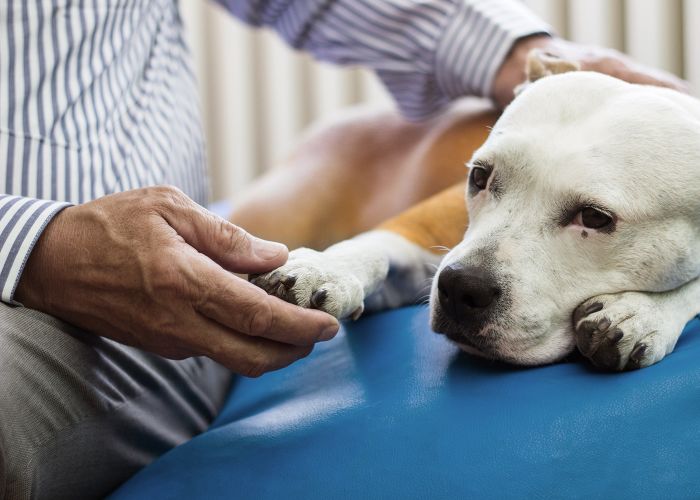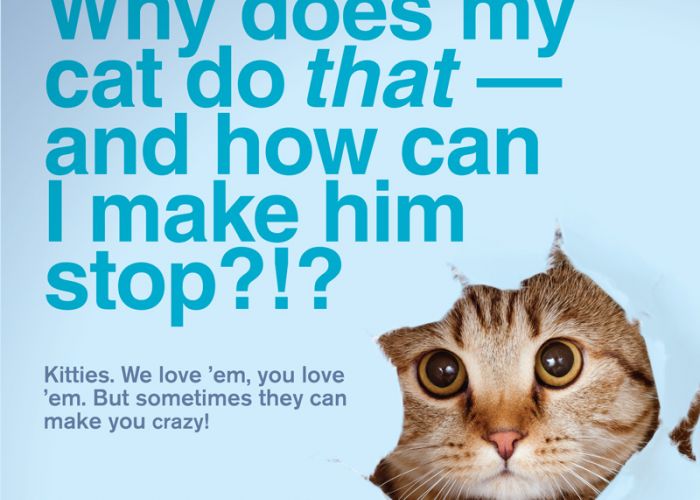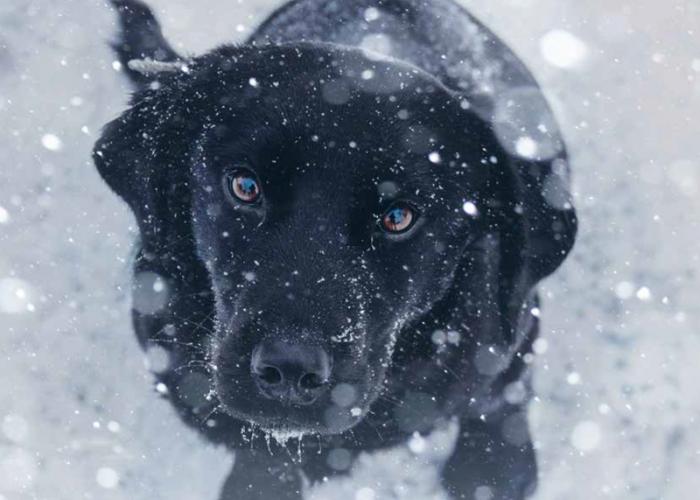Humans of Animal Advocacy: Michelle Kelly
The founder and CEO of the Los Angeles Rabbit Foundation has transformed rabbit care at LA shelters
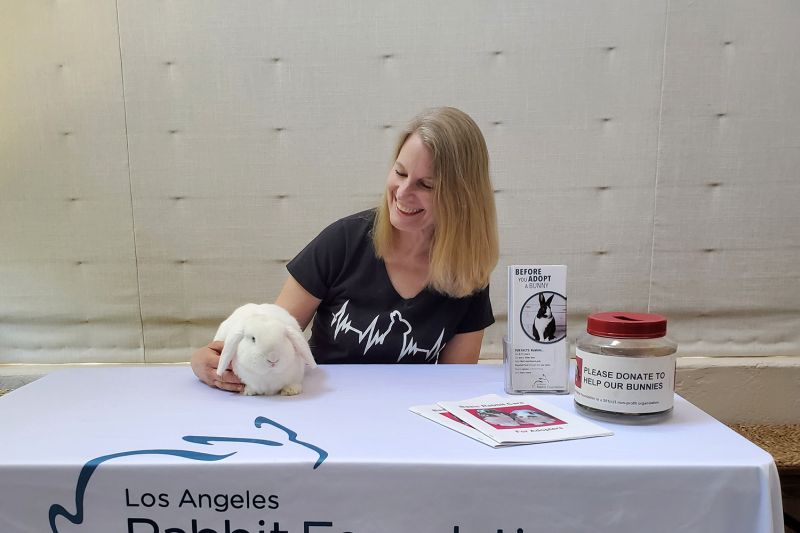
Before Michelle Kelly knew a Flemish Giant from a French Lop, she was living in a no-pets-allowed apartment in West Los Angeles, busy pursuing a doctorate degree in Russian literature and Slavic languages.
Then in the summer of 1998, a friend asked her to take a small black rabbit who’d been purchased from a pet store. Kelly agreed and, wanting to do right by her new pet, started doing some research. She learned that male rabbits should be neutered and that most rabbits are happiest with a companion. So she scheduled an appointment with a veterinarian and set out to find Sasha a friend.
The quest took her to several shelters in the city, and by the time she adopted Mozart, a young black-and-white bunny who had pneumonia, it was clear to Kelly that many shelter rabbits weren’t getting the TLC they deserved. At one shelter, an employee took her aside and admitted the rabbits needed help: Would she volunteer?
“This is how I got sucked into the world of rabbit rescue,” Kelly says. “You see a huge need that’s not being filled, and then you have to step in.”
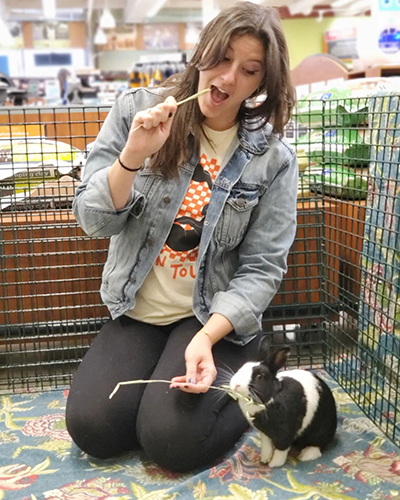
Over the next 24 years, Kelly would transform rabbit care in Los Angeles city shelters. In 2008, she founded the Los Angeles Rabbit Foundation, a chapter of the national House Rabbit Society, and two years later, with her husband’s support, she quit her paid job so she could devote more time to the cause.
Today, her all-volunteer organization runs a foster care program that takes in about 150 bunnies a year, provides support for rabbit owners, and trains volunteers at Los Angeles Animal Services’ six shelters on rabbit handling and care.
None of this was part of the career path Kelly envisioned when she was a student, but she’s happy with her choice. “I love Russian literature,” she says. “I love the study of it. But it’s esoteric. … Here I can make such a bigger difference, not just for rabbits but for the people who care for them.”
In this edited interview, Kelly describes how she worked within the system to raise the profile of rabbits in busy municipal shelters.
What are some of the challenges of advocating for rabbits?
Rabbits fall into that dual category of pets and livestock, and they don’t always receive the attention they should. Rabbits have no voice of their own loud enough to tell anyone they’re being neglected or abused. They’re not good at expressing themselves in ways most people will recognize.
Also, there are many more unwanted rabbits in the U.S. than homes for them. When people express surprise that it can take months to find homes for rabbits, I ask them, “How many people do you know who can provide a safe home for a small prey animal who’s extremely heat-sensitive and can have a heart attack from fear?” Unless they’re already in the rabbit or small animal rescue community, most people don’t understand that challenge.
Do you have advice for people who want to improve rabbit care in their shelter?
You must have a dedicated space for the rabbits. When I started volunteering at the West Los Angeles shelter, the rabbits were housed in the cat room, which meant that every year when kitten season came around, the rabbits were put down to make space for kittens. There was an unused breezeway about 4 or 5 feet wide by 12 to 15 feet long, and I sat down with a shelter leader and said, “If I buy cages, can we block off this breezeway and make it the rabbit area?” And they agreed.
A spay/neuter program is also essential. Early on, I paid for the rabbits to be spayed or neutered with my own money, of which I had very little, but later I was able to connect with rescue organizations to get help with veterinary costs and finding homes for the rabbits. Within a few years, the shelter went from saving only a small percentage of rabbits to saving all healthy rabbits.
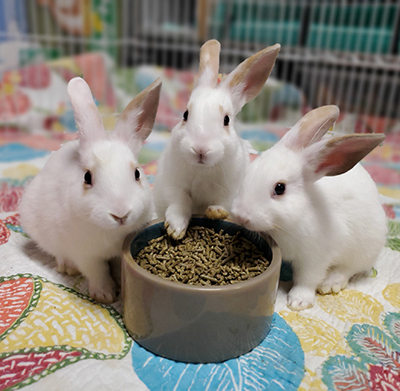
How hard was it to initiate change for the rabbits?
I realized early on that I had to work within the system. It’s a reality that no one’s going to get fired on the basis of what happens to a rabbit. No one’s going to get elected on the basis of what happens to rabbits. So when I started volunteering, I was very nice to everybody and going around doing things like picking up dog poop, because I wanted to make friends with people so that I could help them understand the importance of rabbit care.
There were times when I strongly disagreed with some of the ways individual shelter staff viewed rabbits, but instead of reporting who did what and getting it online and trying to create a protest that would go nowhere, I went to the meetings of the Board of Animal Services Commissioners, and I said, “This happened, and we need to change this policy so it doesn’t happen to other animals.”
I tell volunteers that if they see an empty water bottle, go fill it with water. Don’t try to write up the staff or go complaining online about how the staff aren’t doing their job; they’re understaffed. Our volunteers have to see things from the staff’s point of view. They have to see things from the public’s point of view. And they have to try to get potential adopters to see things from the rabbit’s point of view.
What are some of the most common misconceptions about pet rabbits?
About two-thirds of our adoption applications are like, “We’re going to put them outside in the hutch, and we have a 2-year-old and a 1-year-old and six dogs.” So we talk to them about how the bunny could have a heart attack and how bunnies are happier and safer indoors and how they’re gonna have to supervise the interactions with pets and small children. I’m not saying we won’t adopt to someone who has dogs and kids; I’m just saying that we have to talk to them about how to make it safer.
What lessons have you learned over the years?
You can’t separate the animals’ welfare from that of their humans. I’ve learned to be more patient with people who are unable to properly care for their animals. Soon after I started in this cause, I realized there was no support system in place for anyone who wanted to rehome a rabbit—no adoption support, no moral support, no veterinary support. We try very hard to provide that support to people to help them keep their rabbit or to help them find another home.
Which of your organization’s achievements are you most proud of?
Establishing a successful rabbit program in the city’s animal shelter system. We also successfully lobbied for mandatory spay/neuter, microchipping and vaccination of shelter rabbits, and we created educational materials for adopters, training materials for new volunteers and more. All this was accomplished over a period of decades and is ongoing. And, of course, we couldn’t have done it alone. Only by working with shelter staff and volunteers could we have achieved this much.
Do you have a favorite rescue story?
One day I got a call from a lady named Pam who woke up to find a rabbit sitting on her front porch. Nobody knew where the bunny came from, and he didn’t have a microchip. I gave her some hay and basic supplies and talked her into keeping the bunny while we got him to a local veterinarian. We listed him on our website for adoption, and Pam brought him to our mobile adoption venue to meet potential adopters.
Not much time passed before she informed me that his name was Adobe and she’d be keeping him. Before long, she decided to get Adobe a bunny friend. As the years went by, Pam became my right-hand person and our official volunteer coordinator. She also fostered dozens of rabbits over the years. And it all started with a little tan-and-white bunny sitting on her doorstep, asking to be let in.



